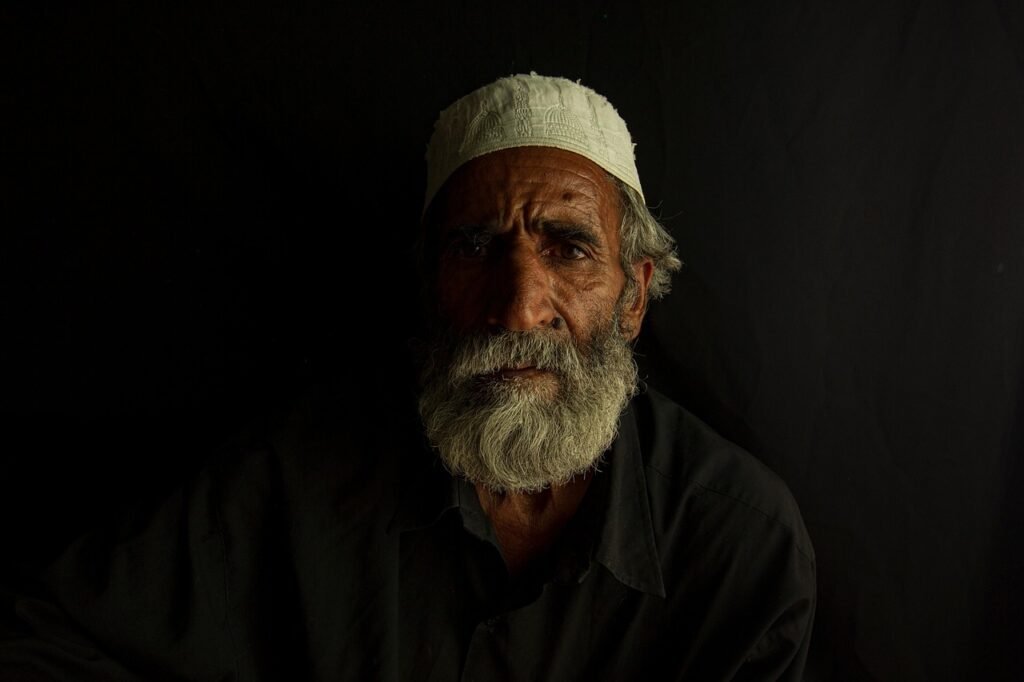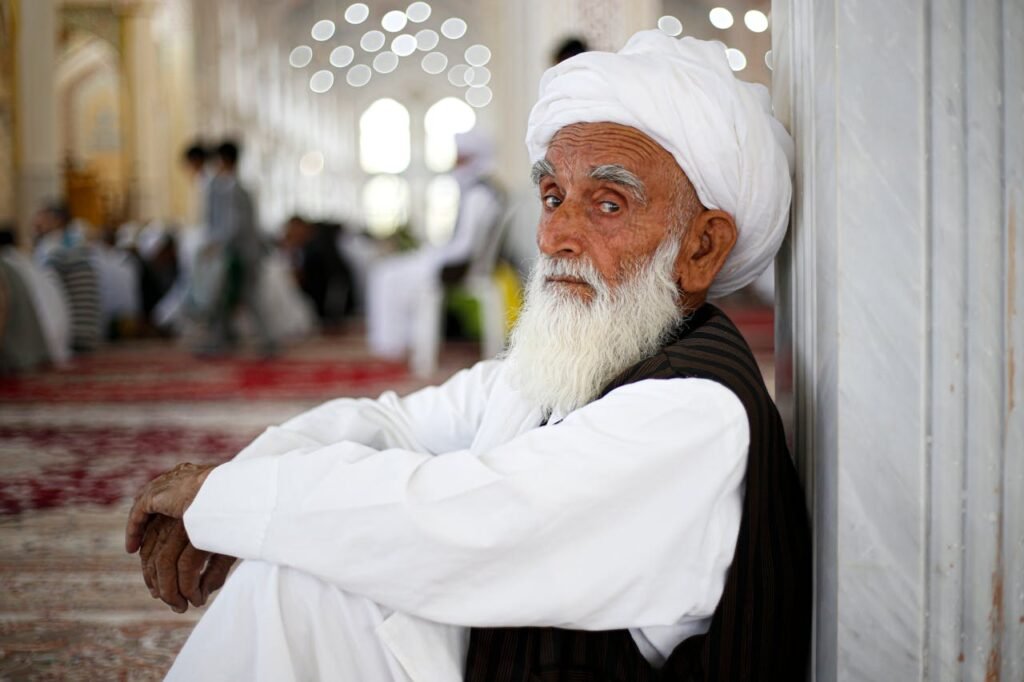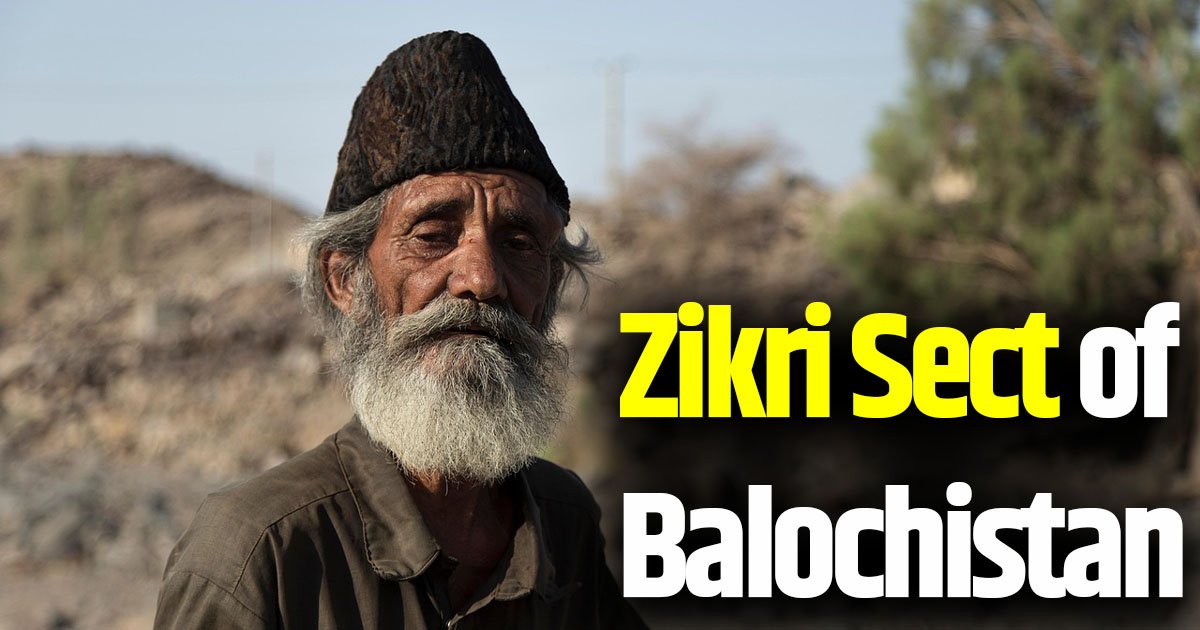Zikri Sect in Balochistan
The Zikri Mahdavi sect is a well-known religious group found in Balochistan, Pakistan, and its surrounding areas. Members of this sect are called “Zikris,” a name derived from the word Zikr (remembrance of God). The Zikris are mostly concentrated in southern Balochistan, particularly in Turbat and its adjoining regions. Essentially, the Zikris are considered a branch within Sunni Islam, as they fully believe in the core pillars of the faith. However, there are two distinctive beliefs that set them apart from other Sunni groups.
First, the Zikris believe that their Imam Mahdi has already appeared in the world, which is why they are also referred to as the Mahdavi sect. Second, they place great emphasis on Zikr (remembrance of God) in their religious practices, especially in prayer. Among them, a special form of Zikr known as Chogan is particularly well known. Due to this unique focus on Zikr in their rituals, the sect came to be called “Zikri.”
Key Questions
This raises several questions: Who do the Zikris regard as their Imam Mahdi? What are the history and teachings associated with him? Which sacred sites do the Zikris revere, and where are they located? Who are the current leaders of the sect, and into how many sub-groups has it been divided over time?
Zikri Historical Narratives and the Loss of Heritage
The history of the Zikri sect is not very old, but an important point must be highlighted: according to Zikri writers, their history has been deliberately distorted. Because of this, even within the Zikri community there is no complete consensus about the true identity of their original Imam Mahdi.
On the issue of their distorted history, Syed Isa Noori—considered a spiritual leader of the Zikris—writes in his book Zikri Tehreek: Mukhtasar Tareekh-o-Taaruf (Zikri Movement: A Brief History and Introduction):
“In the eighteenth century, Nasir I, the Khan of Kalat, launched an attack on Makran, which at that time functioned as a Zikri religious state. The capital of Makran was Turbat, then the intellectual center of the Zikri community. Khan Nasir I not only destroyed Turbat completely but also carried out widespread killings of Zikris. Their scholarly heritage was deliberately targeted and set on fire. Alongside this, Zikri scholars and learned men were massacred, in an attempt to eradicate the sect entirely. The survivors were left so weakened that they could no longer reconstruct or preserve their history.”
Sectarian Divisions Within the Zikri Community
After this tragedy, further divisions emerged within the Zikri community. Today, the Zikris are generally divided into three main groups, and this division is based primarily on their interpretation of who the true Imam Mahdi is.
The first group consists of those Zikris who regard Syed Muhammad Jaunpuri as their Imam Mahdi. The second group also believes in an Imam Mahdi named Syed Muhammad, but they argue that this figure is not Syed Muhammad Jaunpuri; rather, it is another individual of the same name. This group is known as the Mahdaviya. The third group, which forms the majority within the community, maintains that Syed Muhammad and Syed Muhammad Jaunpuri are actually the same person, and that he is their awaited Imam Mahdi. The spiritual leader of this majority group is Syed Isa Noori, who is considered the custodian of all Zikri places of worship. He has also served as a parliamentarian in Pakistan’s National Assembly.
Syed Muhammad Jaunpuri: The Zikri Imam Mahdi
Syed Isa Noori, along with other prominent Zikri writers such as Abdul Ghani Baloch, Syed Nasir Ahmed, and Bandagi Mian Wali, acknowledges Syed Muhammad Jaunpuri as the sect’s Imam Mahdi. According to their accounts, Syed Muhammad Jaunpuri was born on 14th Jumada al-Awwal 847 AH (1443 CE) in Jaunpur, Dana Pur, India. His father’s name was Abdullah, and his mother was Amina Bibi. Belonging to the Sayyid family, a lineage traced back to the Prophet Muhammad, the child was given the name “Muhammad.” Later, owing to the name of his birthplace, he became known as Syed Muhammad Jaunpuri.

The Birth of Imam Mahdi and His Miracles
According to Syed Isa Noori, miraculous signs were reported even before Syed Muhammad Jaunpuri’s birth. On the night his mother conceived, she is said to have experienced a vision in which the moon descended from the sky, entered through her collar, and emerged from her sleeve. Shocked by this experience, she fainted, and her elder brother—a learned scholar of the time—was summoned. He revived her with spiritual recitations, after which she narrated the vision. Hearing this, her brother congratulated her and her husband, declaring that the awaited Mahdi of the Muslims would be born from her womb. In reverence, he is said to have kissed her feet.
Another miracle associated with his birth, as narrated within the Zikri community, is that at the moment of delivery the newborn Syed Muhammad Jaunpuri had already covered his private parts—an act interpreted as a sign of purity. Many other miraculous events are also popularly recounted about his life within the Zikri tradition.
It is narrated about Syed Muhammad Jaunpuri that he memorized the Qur’an by the age of seven and had mastered all branches of Islamic scholarship by the age of twelve. At nineteen, he married his cousin. Historical accounts also suggest that he took part in battles. When Sultan Hussain Sharqi of Jaunpur declared war against Raja Dalpat Rai of Gaur, Syed Muhammad Jaunpuri not only played a prominent role in the campaign but is also credited with personally killing Raja Dalpat Rai.
Proclamation of the Awaited Mahdi
At the age of forty, Syed Muhammad bid farewell to Jaunpur and, accompanied by his family and followers, set out to preach Islam in different parts of India. Eventually, the group traveled from India to Arabia to perform the pilgrimage in Mecca. During the Hajj, when Syed Muhammad reached the space between the Rukn and Maqam Ibrahim in the Kaaba, he openly declared before his disciples that he was the awaited Mahdi. His followers immediately pledged allegiance to him. After completing the pilgrimage, Syed Muhammad and his companions returned to India and resumed their missionary activities, now with the formal proclamation of his Mahdiyya.
Journey to Balochistan and the Early Formation of the Zikris
In the course of his travels, Syed Muhammad entered Sindh, settling briefly in Nasarpur, and from there moved onward to Turbat in Balochistan. In Turbat, he stayed on a hilltop where he engaged in worship and spiritual retreat. This hill later became known as Koh-e-Murad (Mountain of Desire) in his honor. Because of his spiritual presence and devotion there, Koh-e-Murad holds immense significance for the local community.
While residing at Koh-e-Murad, Syed Muhammad preached his claim of Mahdiyya to the local population. A large number of Baloch tribes accepted him as the Imam Mahdi of Muslims and pledged allegiance at his hand. However, his claim also provoked strong opposition from local Muslim scholars, who rejected his Mahdiyya and prepared to confront him. Facing this resistance, Syed Muhammad eventually left Balochistan and moved to the city of Farah in present-day Afghanistan.
Settlement in Afghanistan and the Belief in Occultation
In Farah, the young ruler Shah Beg Arghun was deeply impressed by Syed Muhammad Jaunpuri’s claim of being the Mahdi and pledged allegiance to him. Syed Muhammad spent the remainder of his life in Farah, where he passed away in 1525 CE. A mausoleum was later constructed at the site of his burial, and it still exists in Farah today.
However, many of his devoted followers believe that their Imam Mahdi did not die but rather entered into occultation (parda-e-ghaybat). They hold that one day he will return to the world and fill it with justice and fairness.
Koh-e-Murad, Turbat: The Making of a Zikri Sacred Space
Meanwhile, in Turbat, the places where Syed Muhammad had prayed and meditated gradually acquired religious importance among the Zikris. The hill known as Koh-e-Murad, where he spent time in worship and spiritual retreat, became especially revered. According to Zikri belief, it was on this hill that the prayers of Syed Muhammad Jaunpuri and his companions were accepted by God, who granted them the vision of His divine presence. Because of this, the site came to be called “Koh-e-Murad,” meaning the “Mountain of Fulfilled Desires.” After his departure, his disciples continued to follow his example by praying and performing spiritual retreats there, and over time the place gained the status of a sacred spiritual center for the Zikri community.
The Annual Pilgrimage to Koh-e-Murad and Its Contested Meanings
Even today, Koh-e-Murad holds immense importance for the sect. Every year on the 27th day of Ramadan, Zikris from across Balochistan travel—often on foot along with their families—to this site. Once there, they engage in Zikr and prayers, spending the entire night in worship.
Some outsiders claim that the Zikris regard Koh-e-Murad as a substitute for the Kaaba in Mecca, and that their annual pilgrimage to the hill is a replacement for the Hajj. However, Zikri spiritual leader Syed Isa Noori strongly rejects this notion, describing it as propaganda against the community. In his writings, he clearly states that Koh-e-Murad is merely a site of visitation, revered for its association with their Imam Mahdi.
Chogan and the Rhythm of Zikri Worship
The most important Zikri ritual is known as Chogan. According to Syed Isa Noori, Chogan resembles the Sufi Sama‘ (spiritual musical gathering), but without the use of instruments or music. During a Chogan gathering, one person stands at the center and recites praises of Allah, the Prophet Muhammad, Syed Jaunpuri, Koh-e-Murad, and the city of Turbat in a melodious voice. The rest of the participants form a circle around him and rhythmically repeat the words he recites.
The Zikris perform the five daily prayers. According to Syed Isa Noori, just as there are minor differences in the way different sects in Pakistan perform prayers, the Zikris also have some variations. He explains that in their prayers, they include additional recitations that focus on the remembrance of Allah. For this reason, those who follow the zikr (remembrance) tradition of Syed Muhammad Jaunpuri are known in Balochistan as “Zikri Muslims,” while others are referred to as “Namazi Muslims.”
On Koh-e-Murad, there are several places considered sacred by the Zikris. Among these are Koh-e-Imam, Golden, Mehr, the Tree of Jigar, Sheerin Do Karam, Kariz-e-Izai, Malaye Koh, and the Tree of Barg Gohar. Non-Zikris are not permitted to enter their places of worship or other sacred sites.

Zikri State of Balochistan
In the fifteenth century, an Omani trader named Abu Saeed came to Buleida in the Turbat region for business purposes. He embraced the Zikri faith and eventually settled there. Later, he established his rule over the Makran region, declaring Zikri belief as the official religion of his state, with Turbat as its capital. Since Zikri practices were institutionalized as the state religion, the influence of Zikrism grew significantly, and the community expanded. However, in the seventeenth or eighteenth century, the Khan of Kalat invaded Turbat and brought the Zikri state to an end.
Zikris and Baloch Insurgencies
After the creation of Pakistan, when Balochistan and the State of Kalat were merged into the country, several uprisings occurred in Balochistan in the name of an independent state. In particular, during the insurgency that followed the killing of Nawab Akbar Bugti in 2005, many Baloch separatist fighters participated, most of whom belonged to the Turbat region. Since Turbat is considered the stronghold of the Zikri community, a significant number of separatist fighters from this area were associated with the Zikri sect. However, the spiritual leaders of the Zikris emphasize that, as a religious group, they do not support the idea of an independent state. According to them, if any individual Zikri takes up arms against Pakistan, it is a personal act and not a reflection of Zikri teachings or agenda.
Zikris Population
At present, there is no official or reliable record of the Zikri population. However, according to their own estimates, their numbers exceed two million, both within Pakistan and abroad. In Pakistan, they are mainly concentrated in Balochistan and Sindh, while outside Pakistan they are also found in India, Iran, Afghanistan, Oman, and various Western countries.
References
- Syed Issa Noori, Zikri Tehreek: Mukhtasar Tareekh-o-Taaruf (Zikri Movement: A Brief History and Introduction)
- Saqib Akbar, Pakistan Ke Deeni Masalik, Jhelum: Al Basēra.
- Syed Naseer Ahmad ‘Tafseer zikr wahdat’ (all Pakistan Muslim Zikri anjuman, 2016
- Bandgi Miyan Wali, Hashia Insaf Nama,
The Saifi Sufi Order in Pakistan: From Unique Spiritual Gatherings to the Rise of Street Politics
Mirza Ghulam Ahmad’s Life and Claims: Messiah, Mahdi, and Early Ahmadiyya Movement
The Day the Shroud Was Torn: Imam Khomeini’s Emotional Funeral

